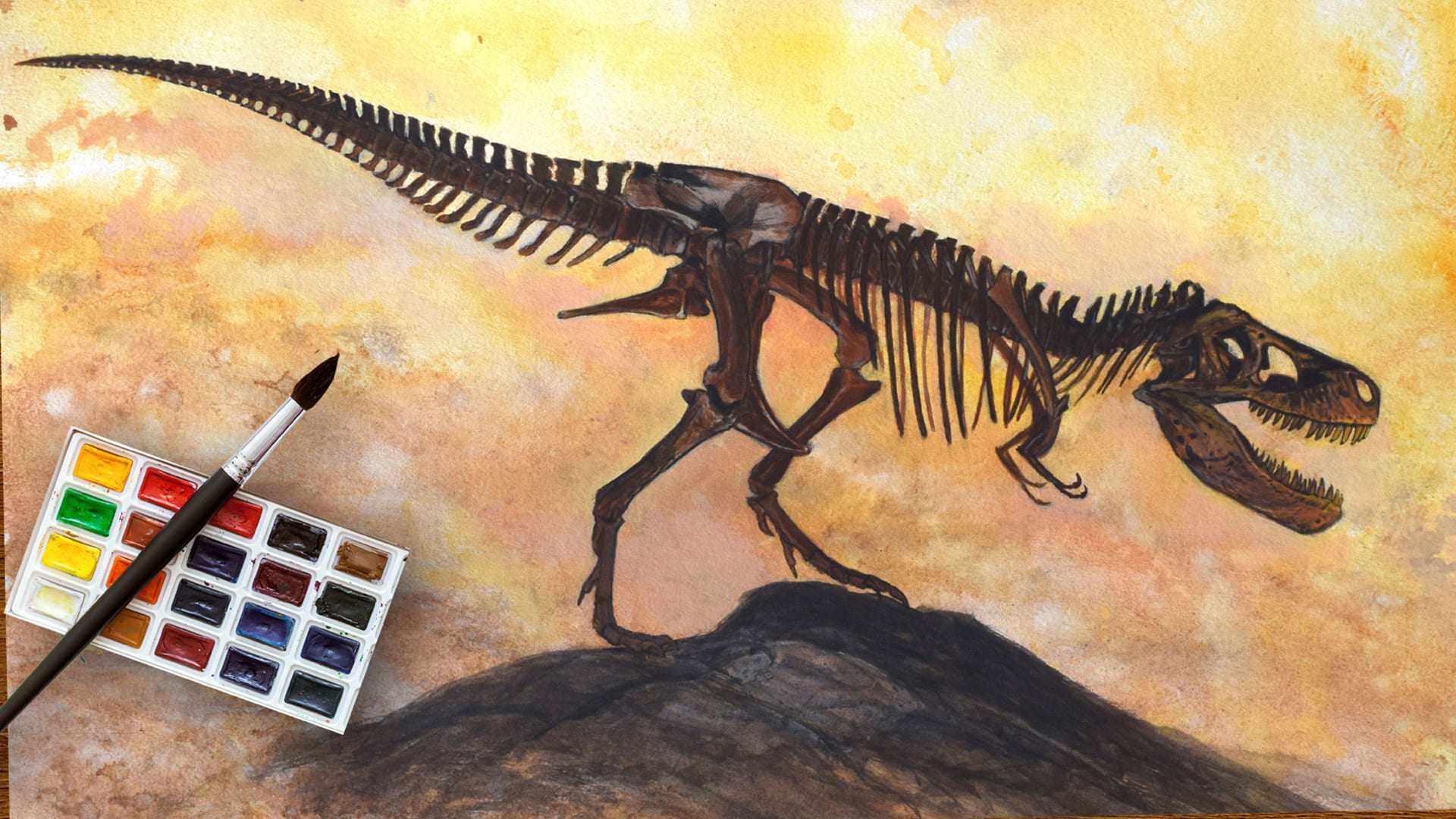Scroll for prep

Please wait…
This video is having trouble loading. You may have lost your Internet connection.
Step 1: Click to Reload this page
Step 2: Click to
Try our other video player
Step 3: Contact your teacher if trouble persists.
Or,
dismiss this message.
Conversemos:
¿Cómo crees que los científicos y las científicas averiguaron cómo eran los dinosaurios?

Please wait…
This video is having trouble loading. You may have lost your Internet connection.
Step 1: Click to Reload this page
Step 2: Click to
Try our other video player
Step 3: Contact your teacher if trouble persists.
Or,
dismiss this message.
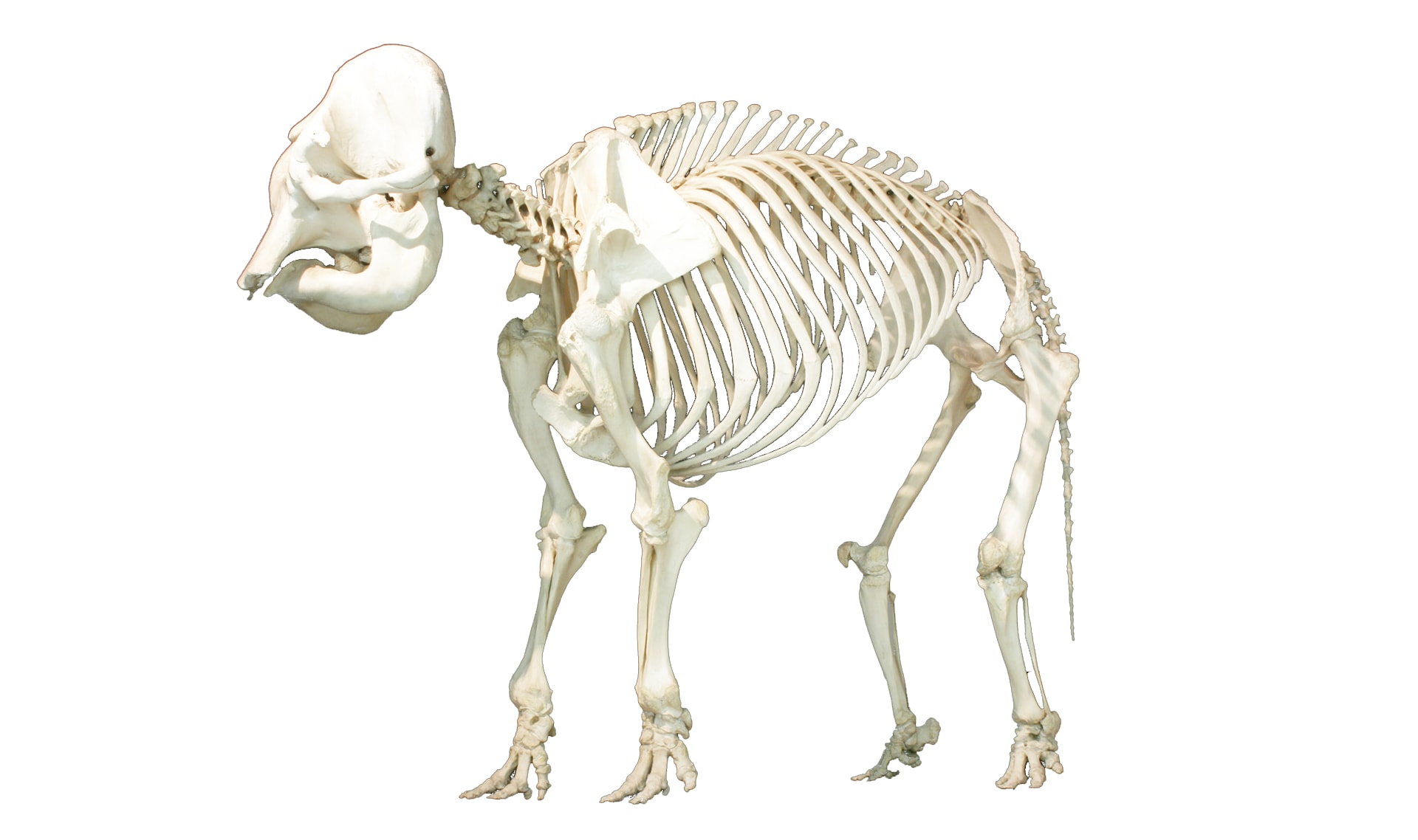
Conversemos: (1 de 6)
Este es el esqueleto de un tipo de animal que existe hoy en día.
¿Qué animal crees que es?
Este es el esqueleto de un tipo de animal que existe hoy en día.
¿Qué animal crees que es?
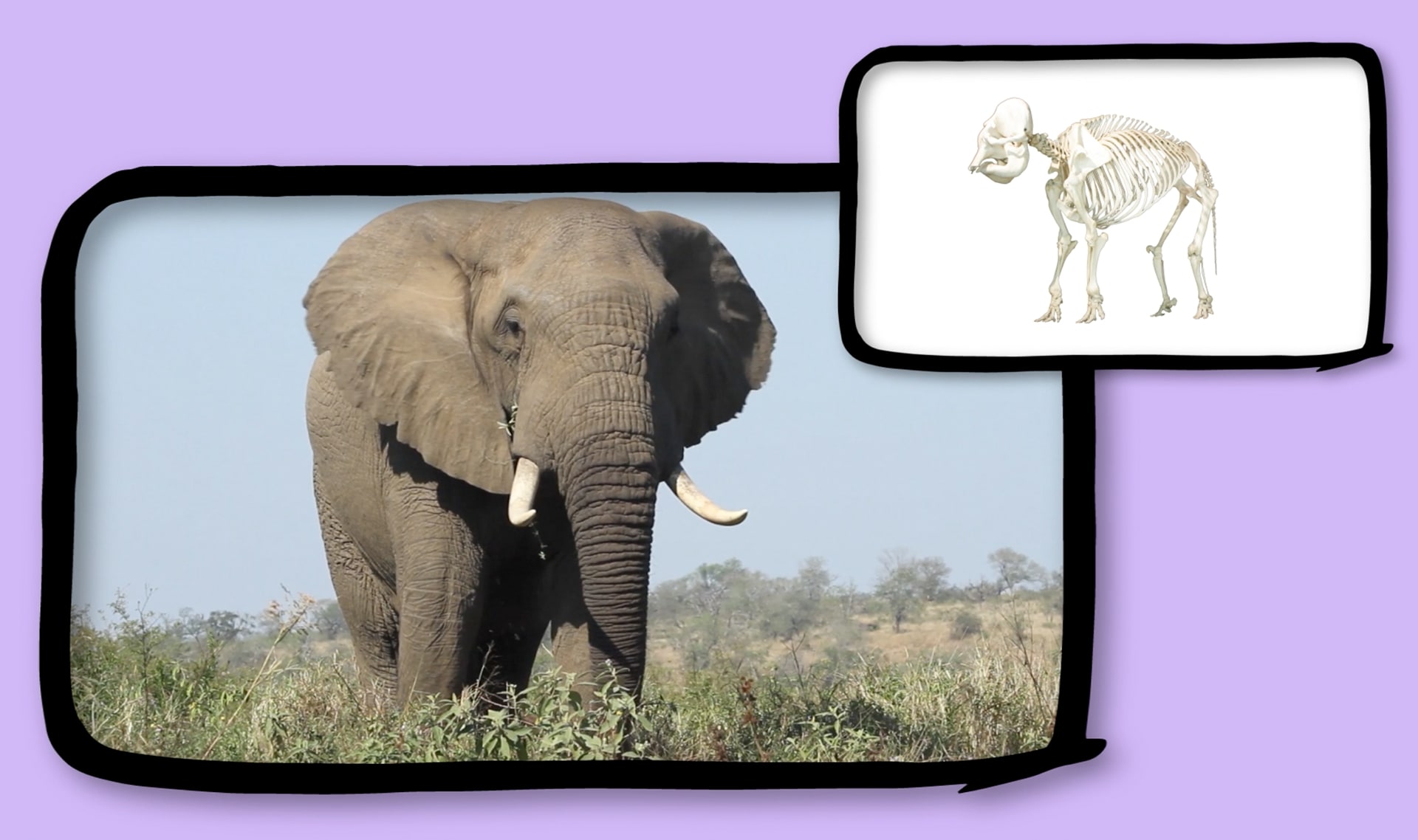
Conversemos: (2 de 6)
¡Es un ELEFANTE!
¿Qué tendríamos que agregarle para que se parezca más a un elefante?
¡Es un ELEFANTE!
¿Qué tendríamos que agregarle para que se parezca más a un elefante?
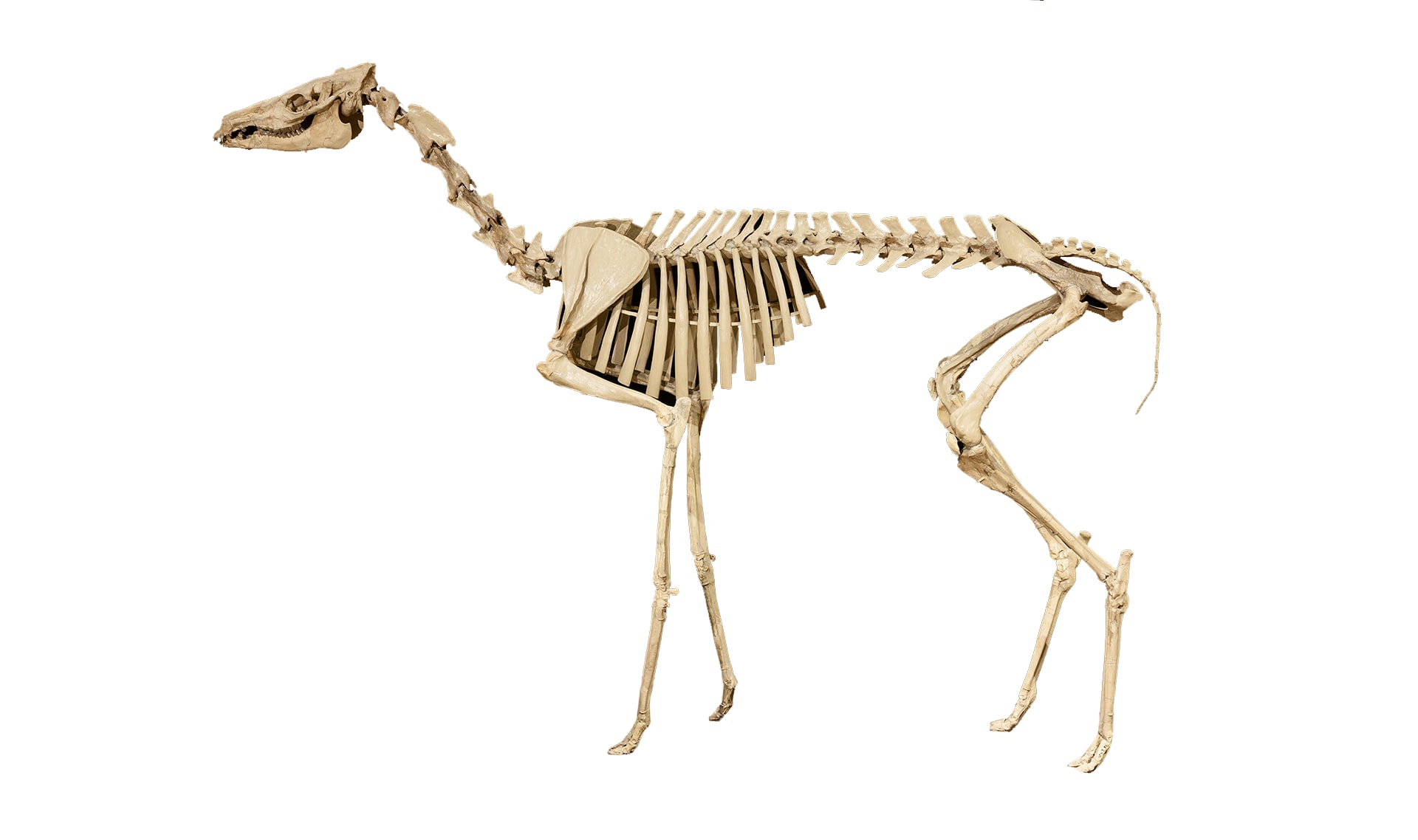
Conversemos: (3 de 6)
¡Inténtalo otra vez! Este es el esqueleto de un animal que existe hoy en día.
¿Qué animal crees que es?
¡Inténtalo otra vez! Este es el esqueleto de un animal que existe hoy en día.
¿Qué animal crees que es?
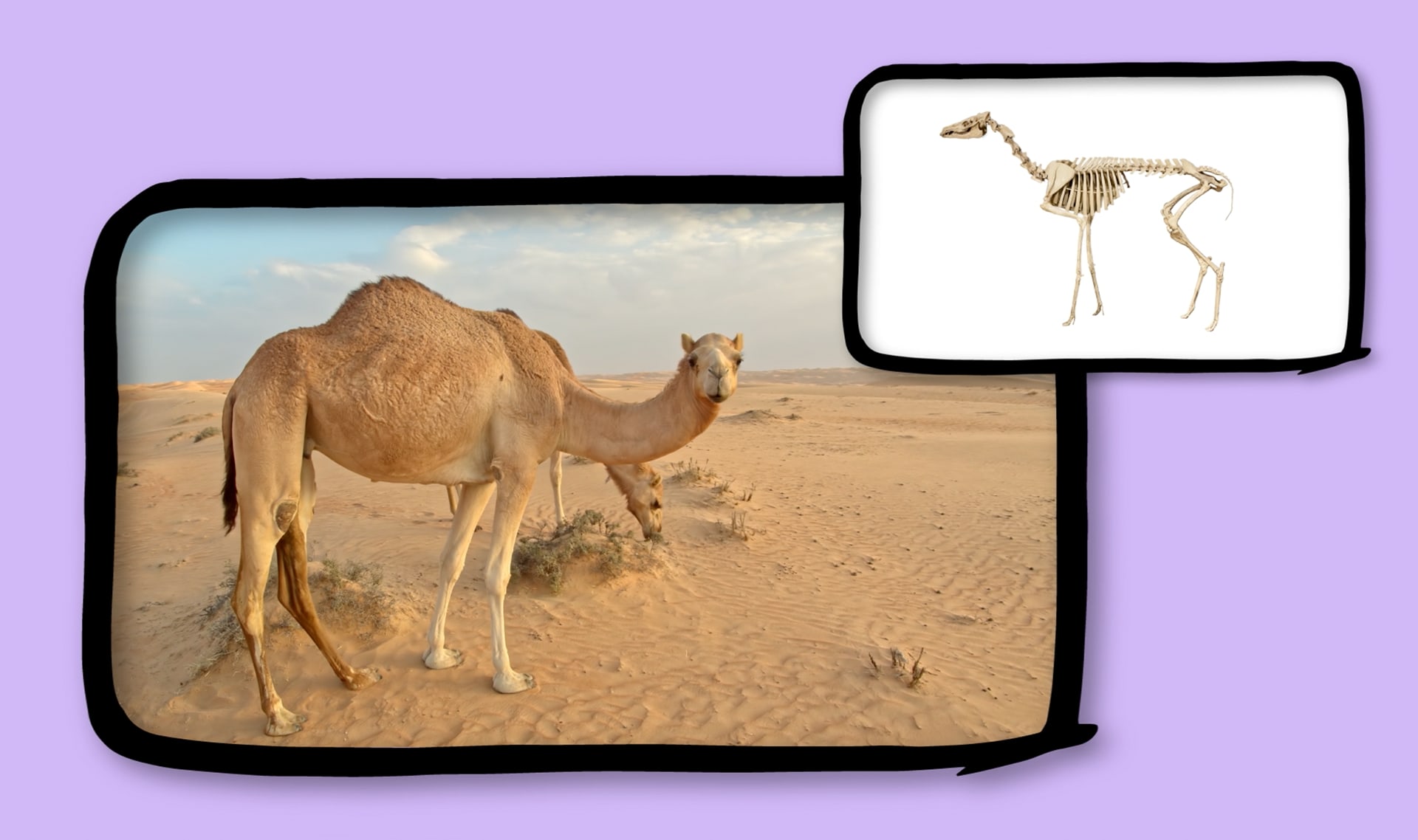
Conversemos: (4 de 6)
¡Es un CAMELLO!
¿Qué tendríamos que agregarle para que se parezca más a un camello?
¡Es un CAMELLO!
¿Qué tendríamos que agregarle para que se parezca más a un camello?
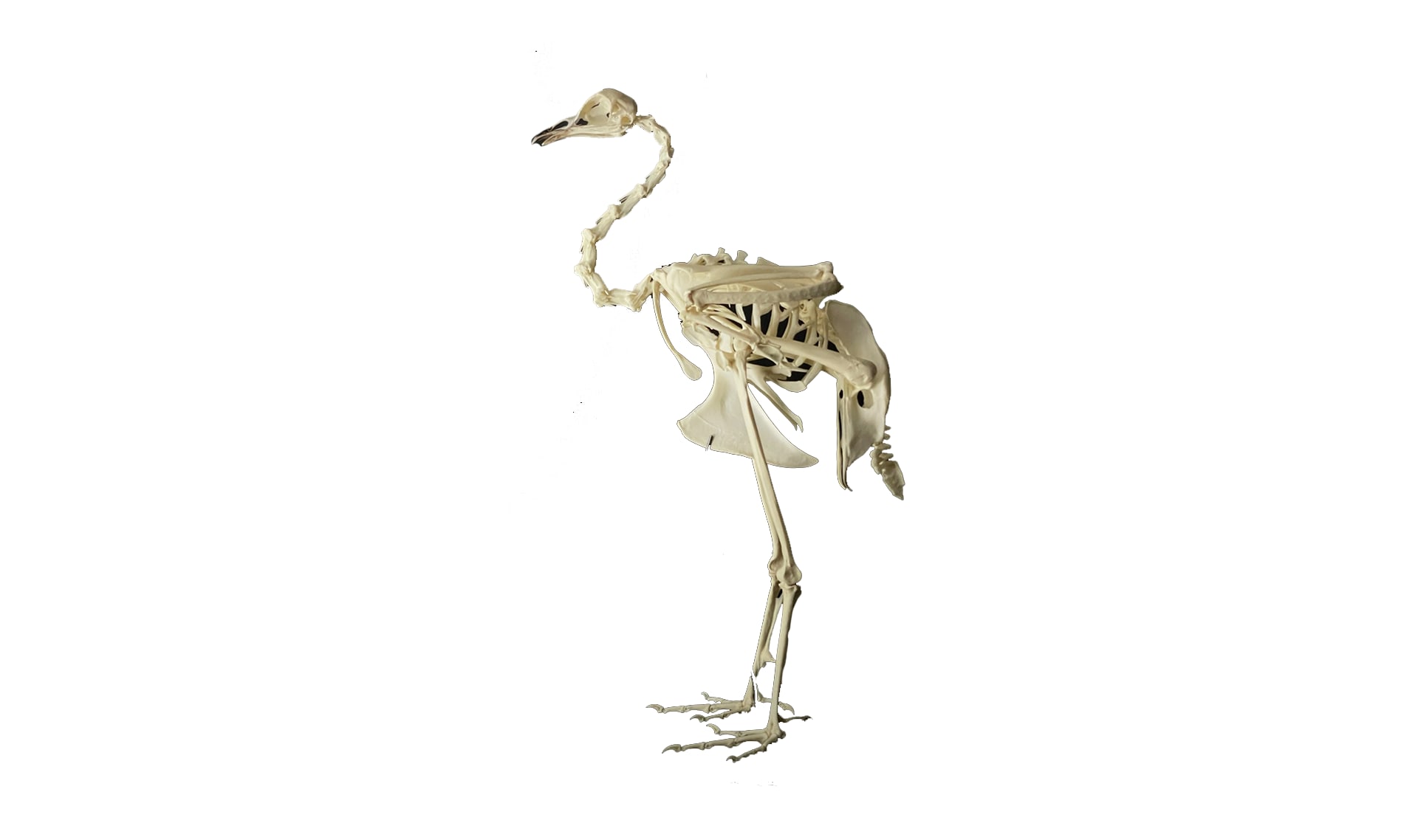
Conversemos: (5 de 6)
¡Este es el último! Este es el esqueleto de un tipo de animal que existe hoy en día.
¿Qué animal crees que es?
¡Este es el último! Este es el esqueleto de un tipo de animal que existe hoy en día.
¿Qué animal crees que es?
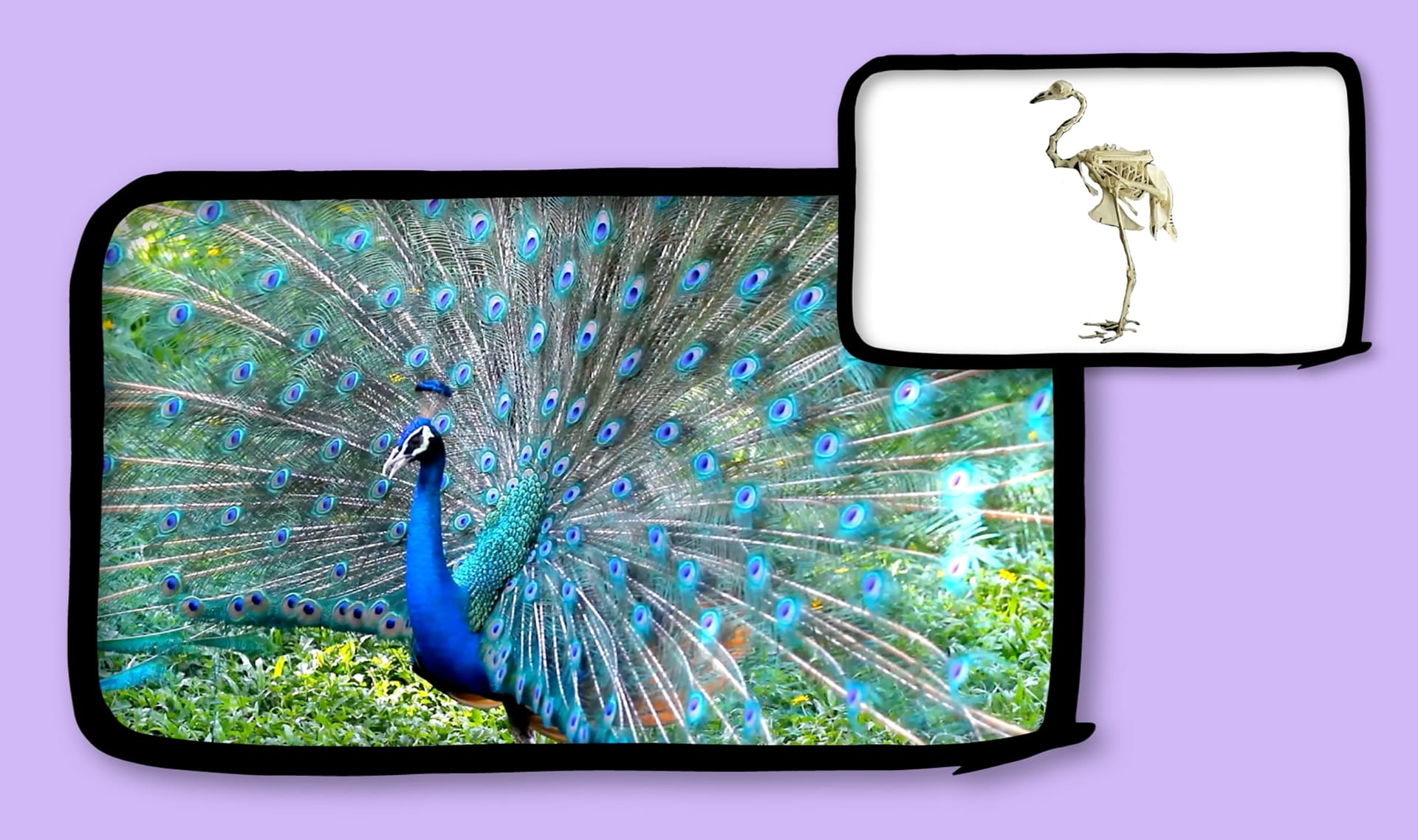
Conversemos: (6 de 6)
¡Es un PAVO REAL!
¿Qué tendríamos que agregarle para que se parezca más a un pavo real?
¡Es un PAVO REAL!
¿Qué tendríamos que agregarle para que se parezca más a un pavo real?

Please wait…
This video is having trouble loading. You may have lost your Internet connection.
Step 1: Click to Reload this page
Step 2: Click to
Try our other video player
Step 3: Contact your teacher if trouble persists.
Or,
dismiss this message.

Conversemos:
¿Qué tienen en común los animales de arriba?
¿Cómo son DIFERENTES a los animales de abajo?
¿Qué tienen en común los animales de arriba?
¿Cómo son DIFERENTES a los animales de abajo?

Please wait…
This video is having trouble loading. You may have lost your Internet connection.
Step 1: Click to Reload this page
Step 2: Click to
Try our other video player
Step 3: Contact your teacher if trouble persists.
Or,
dismiss this message.

Conversemos:
Observa este fósil cuidadosamente. ¿Qué puedes ver?
Describe lo que ves e incluye muchos detalles en tu descripción.
Observa este fósil cuidadosamente. ¿Qué puedes ver?
Describe lo que ves e incluye muchos detalles en tu descripción.

Please wait…
This video is having trouble loading. You may have lost your Internet connection.
Step 1: Click to Reload this page
Step 2: Click to
Try our other video player
Step 3: Contact your teacher if trouble persists.
Or,
dismiss this message.

Please wait…
This video is having trouble loading. You may have lost your Internet connection.
Step 1: Click to Reload this page
Step 2: Click to
Try our other video player
Step 3: Contact your teacher if trouble persists.
Or,
dismiss this message.
Paso
01/20
01/20
Vas a trabajar con un compañero o una compañera

Please wait…
This video is having trouble loading. You may have lost your Internet connection.
Step 1: Click to Reload this page
Step 2: Click to
Try our other video player
Step 3: Contact your teacher if trouble persists.
Or,
dismiss this message.
Paso
02/20
02/20
Obtén estos materiales.

Please wait…
This video is having trouble loading. You may have lost your Internet connection.
Step 1: Click to Reload this page
Step 2: Click to
Try our other video player
Step 3: Contact your teacher if trouble persists.
Or,
dismiss this message.
Paso
03/20
03/20
Corta a lo largo de las líneas punteadas de tus tarjetas de Huesos de
Animales Modernos. Ponlas en 3 montoncitos: A, B, y C.
Animales Modernos. Ponlas en 3 montoncitos: A, B, y C.

Please wait…
This video is having trouble loading. You may have lost your Internet connection.
Step 1: Click to Reload this page
Step 2: Click to
Try our other video player
Step 3: Contact your teacher if trouble persists.
Or,
dismiss this message.
Paso
04/20
04/20
Observa estos cráneos (las tarjetas A) con tu compañero/a. Escribe
notitas y encierra en un círculo los patrones que observaste.
notitas y encierra en un círculo los patrones que observaste.

Please wait…
This video is having trouble loading. You may have lost your Internet connection.
Step 1: Click to Reload this page
Step 2: Click to
Try our other video player
Step 3: Contact your teacher if trouble persists.
Or,
dismiss this message.
Paso
05a/20
05a/20
Separa las tarjetas de los cráneos en dos grupos: carnívoros y
herbívoros. Contesta la pregunta #1 en tu hoja de trabajo.
herbívoros. Contesta la pregunta #1 en tu hoja de trabajo.

Please wait…
This video is having trouble loading. You may have lost your Internet connection.
Step 1: Click to Reload this page
Step 2: Click to
Try our other video player
Step 3: Contact your teacher if trouble persists.
Or,
dismiss this message.
Paso
05b/20
05b/20
Esto fue lo que nosotros notamos.

Please wait…
This video is having trouble loading. You may have lost your Internet connection.
Step 1: Click to Reload this page
Step 2: Click to
Try our other video player
Step 3: Contact your teacher if trouble persists.
Or,
dismiss this message.
Paso
06/20
06/20
Finalicen su decisión sobre qué cráneos creen que van en el grupo
de carnívoros y cuales van en el grupo de herbívoros.
de carnívoros y cuales van en el grupo de herbívoros.

Please wait…
This video is having trouble loading. You may have lost your Internet connection.
Step 1: Click to Reload this page
Step 2: Click to
Try our other video player
Step 3: Contact your teacher if trouble persists.
Or,
dismiss this message.
Paso
07a/20
07a/20
¿Crees que el dinosaurio comía carne o plantas?
Contesta las preguntas #2 y #3 en tu hoja de trabajo.
Contesta las preguntas #2 y #3 en tu hoja de trabajo.

Please wait…
This video is having trouble loading. You may have lost your Internet connection.
Step 1: Click to Reload this page
Step 2: Click to
Try our other video player
Step 3: Contact your teacher if trouble persists.
Or,
dismiss this message.
Paso
07b/20
07b/20
Esto fue lo que nosotros notamos.

Please wait…
This video is having trouble loading. You may have lost your Internet connection.
Step 1: Click to Reload this page
Step 2: Click to
Try our other video player
Step 3: Contact your teacher if trouble persists.
Or,
dismiss this message.
Paso
08/20
08/20
¡Han descubierto un fósil nuevo!

Please wait…
This video is having trouble loading. You may have lost your Internet connection.
Step 1: Click to Reload this page
Step 2: Click to
Try our other video player
Step 3: Contact your teacher if trouble persists.
Or,
dismiss this message.
Paso
09/20
09/20
Observa estos huesos (las tarjetas B) con tu compañero/a. Escribe
notitas y encierra en un círculo los patrones que observaste.
notitas y encierra en un círculo los patrones que observaste.

Please wait…
This video is having trouble loading. You may have lost your Internet connection.
Step 1: Click to Reload this page
Step 2: Click to
Try our other video player
Step 3: Contact your teacher if trouble persists.
Or,
dismiss this message.
Paso
10a/20
10a/20
Separa las tarjetas B en dos grupos: animales que caminan sobre sus
dos patas traseras y animales que caminan sobre cuatro patas.
Contesta la pregunta #4 en tu hoja de trabajo.
dos patas traseras y animales que caminan sobre cuatro patas.
Contesta la pregunta #4 en tu hoja de trabajo.

Please wait…
This video is having trouble loading. You may have lost your Internet connection.
Step 1: Click to Reload this page
Step 2: Click to
Try our other video player
Step 3: Contact your teacher if trouble persists.
Or,
dismiss this message.
Paso
10b/20
10b/20
Esto fue lo que nosotros notamos.

Please wait…
This video is having trouble loading. You may have lost your Internet connection.
Step 1: Click to Reload this page
Step 2: Click to
Try our other video player
Step 3: Contact your teacher if trouble persists.
Or,
dismiss this message.
Paso
11/20
11/20
Finalicen su decisión sobre qué huesos pertenecen a cada grupo.

Please wait…
This video is having trouble loading. You may have lost your Internet connection.
Step 1: Click to Reload this page
Step 2: Click to
Try our other video player
Step 3: Contact your teacher if trouble persists.
Or,
dismiss this message.
Paso
12a/20
12a/20
¿Crees que este dinosaurio caminaba sobre sus dos patas traseras
o sobre cuatro patas? Contesta las preguntas #5 y #6 en tu hoja
de trabajo.
o sobre cuatro patas? Contesta las preguntas #5 y #6 en tu hoja
de trabajo.

Please wait…
This video is having trouble loading. You may have lost your Internet connection.
Step 1: Click to Reload this page
Step 2: Click to
Try our other video player
Step 3: Contact your teacher if trouble persists.
Or,
dismiss this message.
Paso
12b/20
12b/20
Esto fue lo que nosotros notamos.

Please wait…
This video is having trouble loading. You may have lost your Internet connection.
Step 1: Click to Reload this page
Step 2: Click to
Try our other video player
Step 3: Contact your teacher if trouble persists.
Or,
dismiss this message.
Paso
13/20
13/20
¡Han descubierto un fósil nuevo!

Please wait…
This video is having trouble loading. You may have lost your Internet connection.
Step 1: Click to Reload this page
Step 2: Click to
Try our other video player
Step 3: Contact your teacher if trouble persists.
Or,
dismiss this message.
Paso
14/20
14/20
Observa estos huesos (las tarjetas C) con tu compañero/a. Escribe
notitas y encierra en un círculo los patrones que observaste.
notitas y encierra en un círculo los patrones que observaste.

Please wait…
This video is having trouble loading. You may have lost your Internet connection.
Step 1: Click to Reload this page
Step 2: Click to
Try our other video player
Step 3: Contact your teacher if trouble persists.
Or,
dismiss this message.
Paso
15/20
15/20
Separa las tarjetas C en tres grupos: alas, aletas, y garras.
Contesta la pregunta #7 en tu hoja de trabajo.
Contesta la pregunta #7 en tu hoja de trabajo.

Please wait…
This video is having trouble loading. You may have lost your Internet connection.
Step 1: Click to Reload this page
Step 2: Click to
Try our other video player
Step 3: Contact your teacher if trouble persists.
Or,
dismiss this message.
Paso
16/20
16/20
Obtén el resto de tus materiales.

Please wait…
This video is having trouble loading. You may have lost your Internet connection.
Step 1: Click to Reload this page
Step 2: Click to
Try our other video player
Step 3: Contact your teacher if trouble persists.
Or,
dismiss this message.
Paso
17a/20
17a/20
Recorten las tarjetas de huesos extras. Observen los huesos y
sepárenlos en tres grupo: alas, aletas, y garras.
sepárenlos en tres grupo: alas, aletas, y garras.

Please wait…
This video is having trouble loading. You may have lost your Internet connection.
Step 1: Click to Reload this page
Step 2: Click to
Try our other video player
Step 3: Contact your teacher if trouble persists.
Or,
dismiss this message.
Paso
17b/20
17b/20
Esto fue lo que nosotros notamos.

Please wait…
This video is having trouble loading. You may have lost your Internet connection.
Step 1: Click to Reload this page
Step 2: Click to
Try our other video player
Step 3: Contact your teacher if trouble persists.
Or,
dismiss this message.
Paso
18a/20
18a/20
Pon este hueso fósil en uno de tus 3 grupos.
Contesta las preguntas #8 y #9 en tu hoja de trabajo.
Contesta las preguntas #8 y #9 en tu hoja de trabajo.

Please wait…
This video is having trouble loading. You may have lost your Internet connection.
Step 1: Click to Reload this page
Step 2: Click to
Try our other video player
Step 3: Contact your teacher if trouble persists.
Or,
dismiss this message.
Paso
18b/20
18b/20
Esto fue lo que nosotros notamos.

Please wait…
This video is having trouble loading. You may have lost your Internet connection.
Step 1: Click to Reload this page
Step 2: Click to
Try our other video player
Step 3: Contact your teacher if trouble persists.
Or,
dismiss this message.
Paso
19/20
19/20
Conversemos:

Please wait…
This video is having trouble loading. You may have lost your Internet connection.
Step 1: Click to Reload this page
Step 2: Click to
Try our other video player
Step 3: Contact your teacher if trouble persists.
Or,
dismiss this message.
Paso
20/20
20/20
Conversemos:

Please wait…
This video is having trouble loading. You may have lost your Internet connection.
Step 1: Click to Reload this page
Step 2: Click to
Try our other video player
Step 3: Contact your teacher if trouble persists.
Or,
dismiss this message.
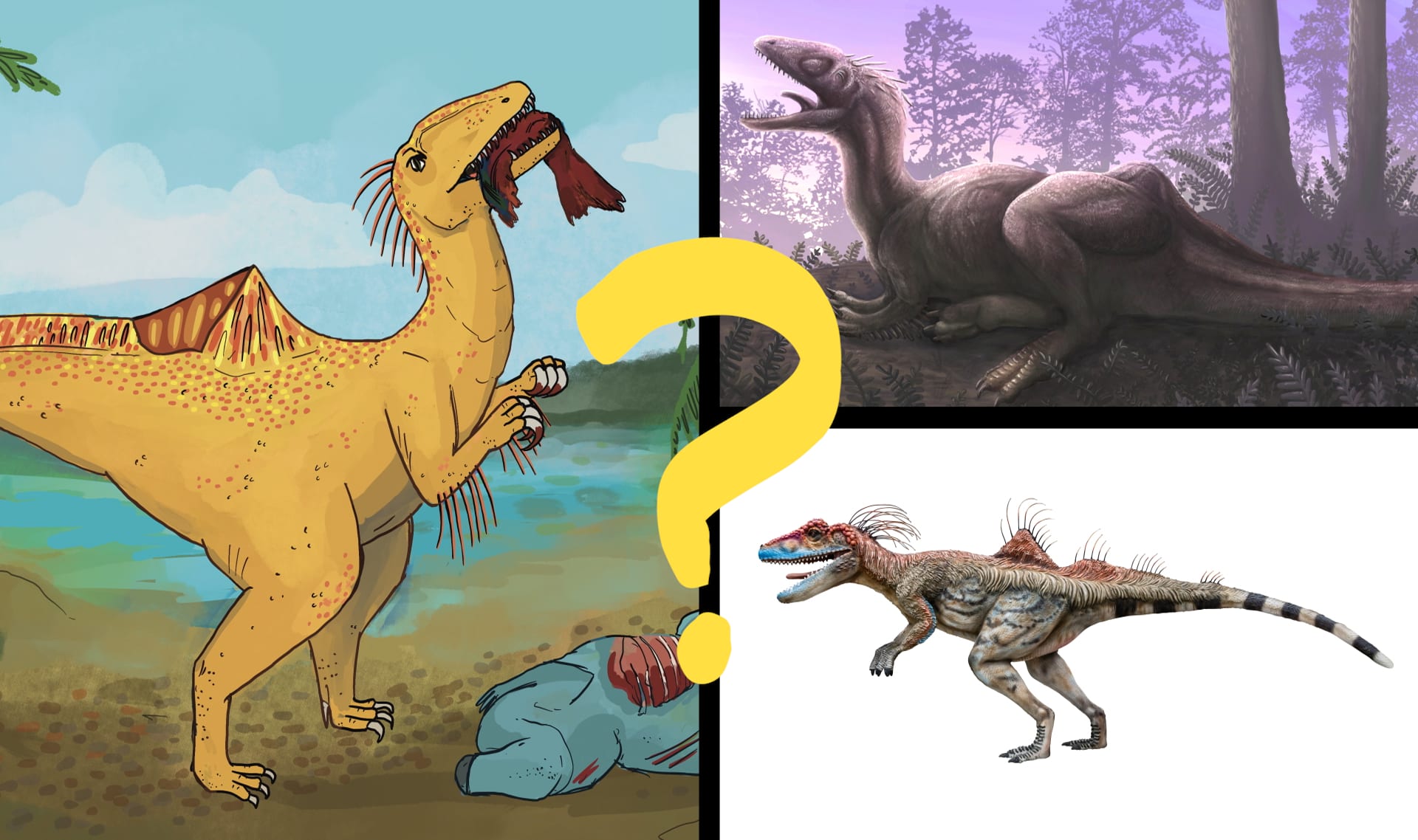
Conversemos:
Observa estas imágenes. ¿En qué se parecen? ¿Cómo son diferentes?
Observa estas imágenes. ¿En qué se parecen? ¿Cómo son diferentes?

Please wait…
This video is having trouble loading. You may have lost your Internet connection.
Step 1: Click to Reload this page
Step 2: Click to
Try our other video player
Step 3: Contact your teacher if trouble persists.
Or,
dismiss this message.
Conversemos:
Si los científicos no tienen suficientes fósiles de las partes blandas de los dinosaurios, ¿qué tipo de evidencia debería de usar un paleoartista para dibujar esas partes?

Please wait…
This video is having trouble loading. You may have lost your Internet connection.
Step 1: Click to Reload this page
Step 2: Click to
Try our other video player
Step 3: Contact your teacher if trouble persists.
Or,
dismiss this message.


dinosaurio
1 de 11
un tipo de animal que vivió hace mucho tiempo y que tiene características en común con los pájaros y reptiles modernos
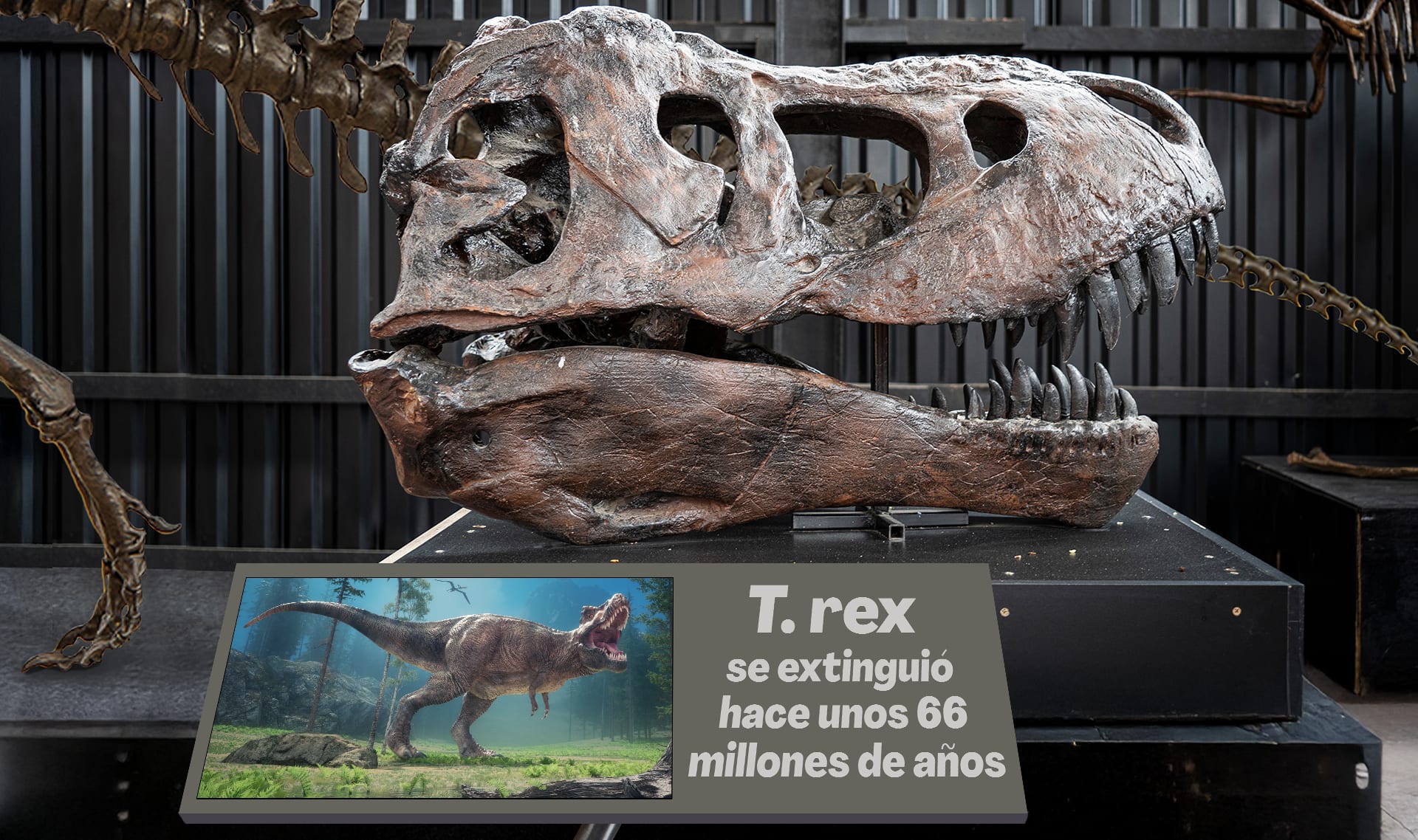
extinto/a
2 de 11
un ser viviente que hace mucho tiempo vivía en la Tierra pero ya no existe
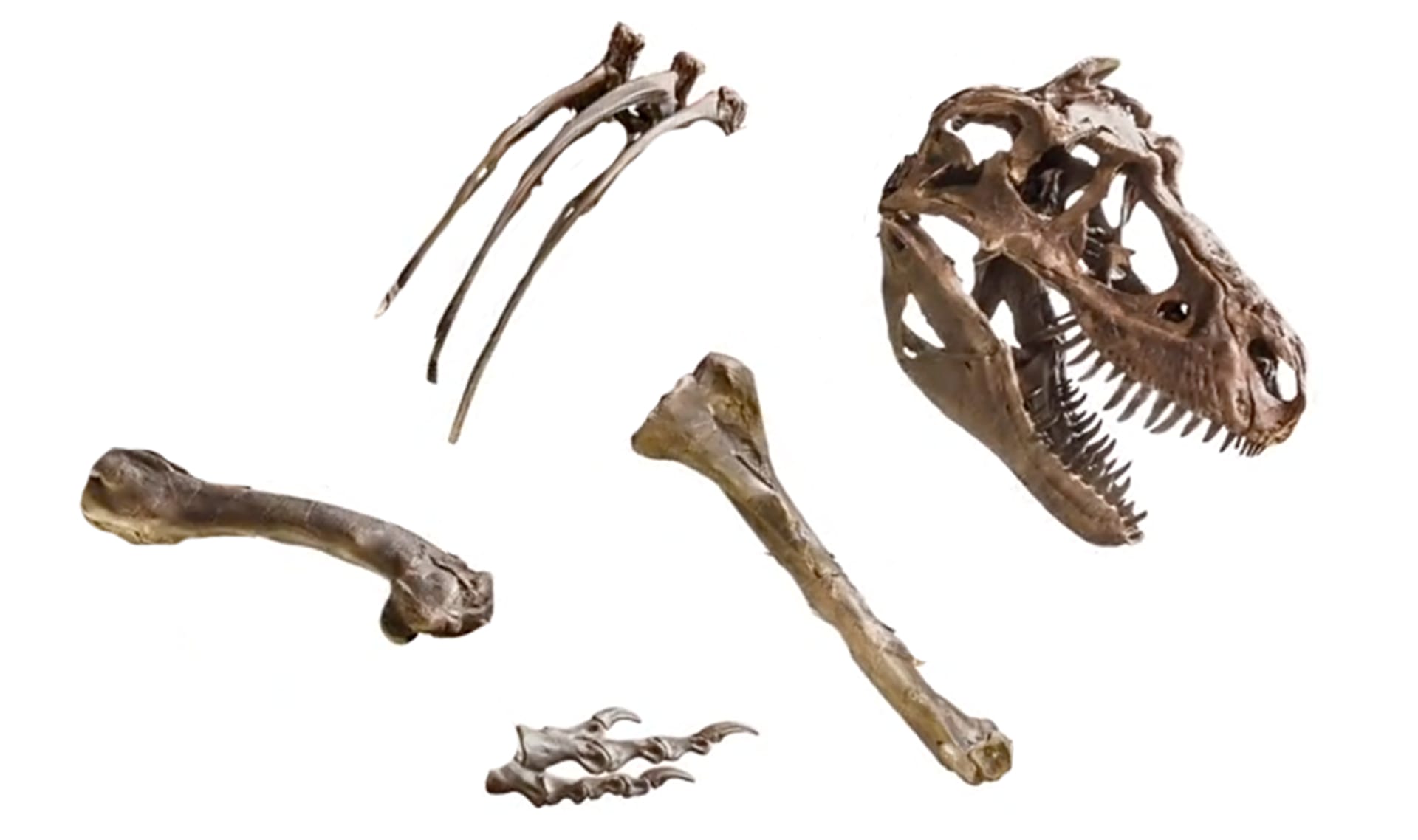
huesos
3 de 11
partes sólidas dentro de muchos animales que ayudan a darle forma a sus cuerpos
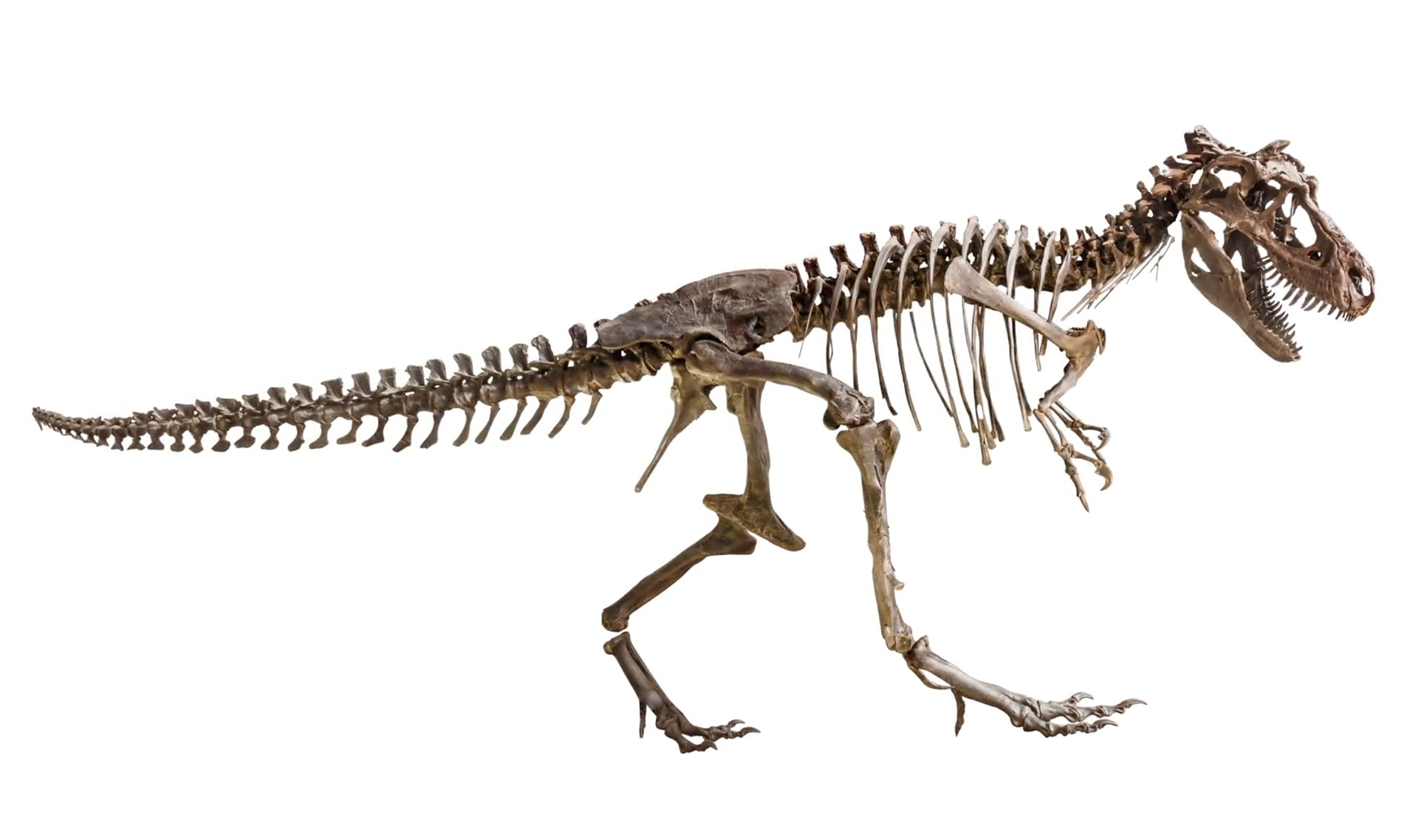
esqueleto
4 de 11
todos los huesos de un animal

fósil
5 de11
los restos de una planta o un animal que se murió hace muchísimo tiempo
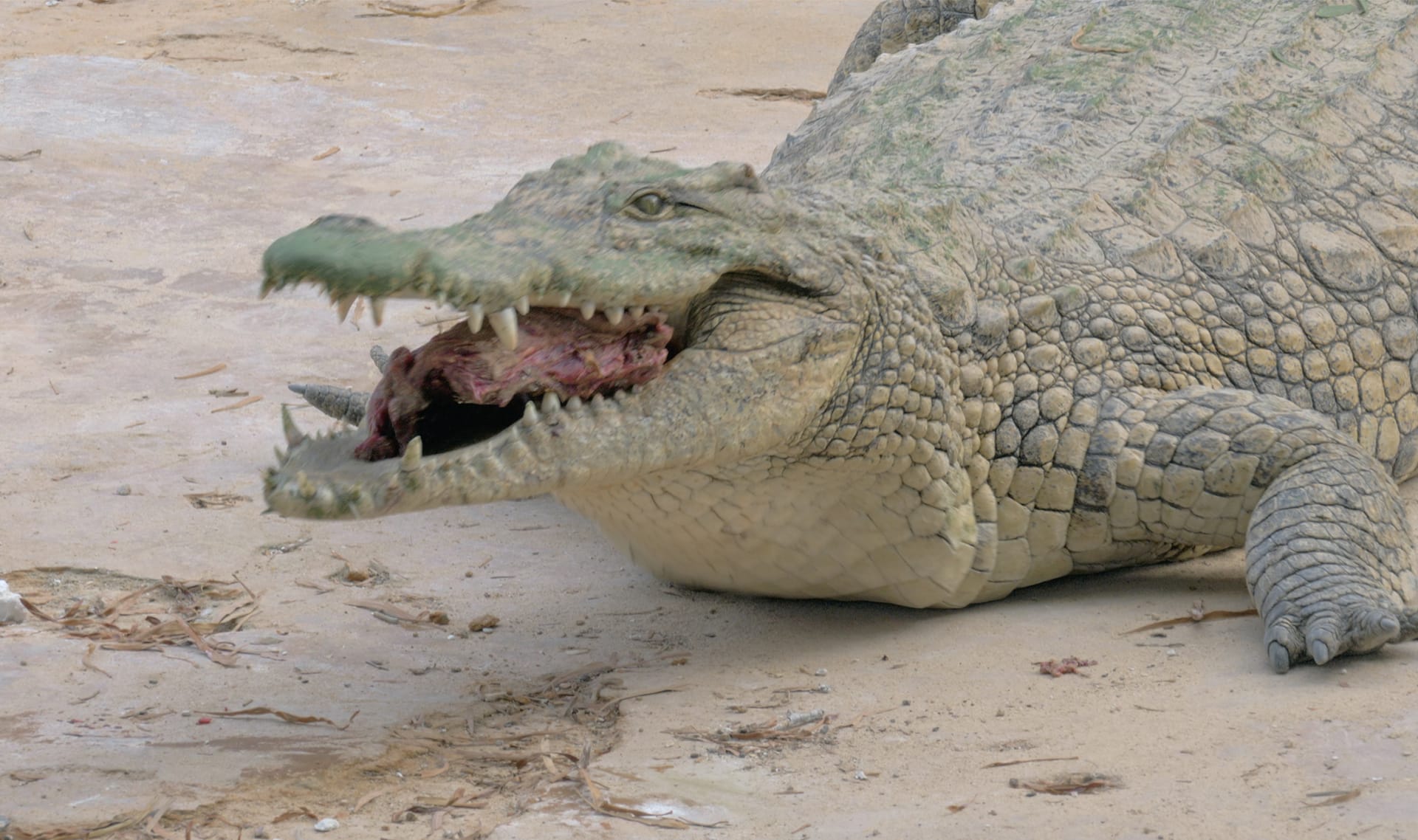
carnívoro
6 de 11
un tipo de animal que solo se como a otros animales
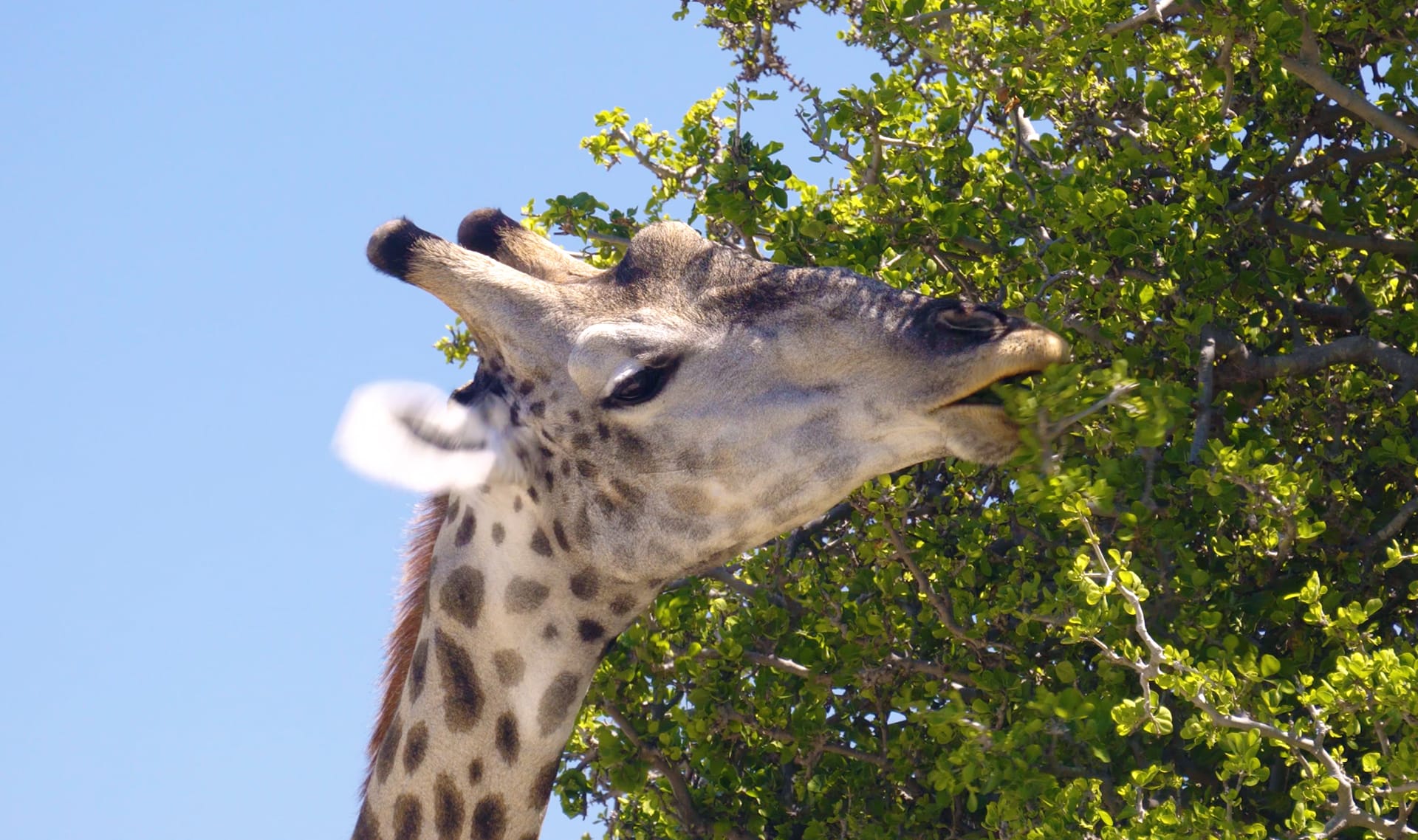
herbívoro
7 de 11
un animal que solo come plantas

paleontólogo
8 de 11
un científico o una científica que se dedica al estudio de los fósiles

observar
9 de 11
ponerle mucha atención a algo

afirmar
10 de 11
decir o escribir una idea
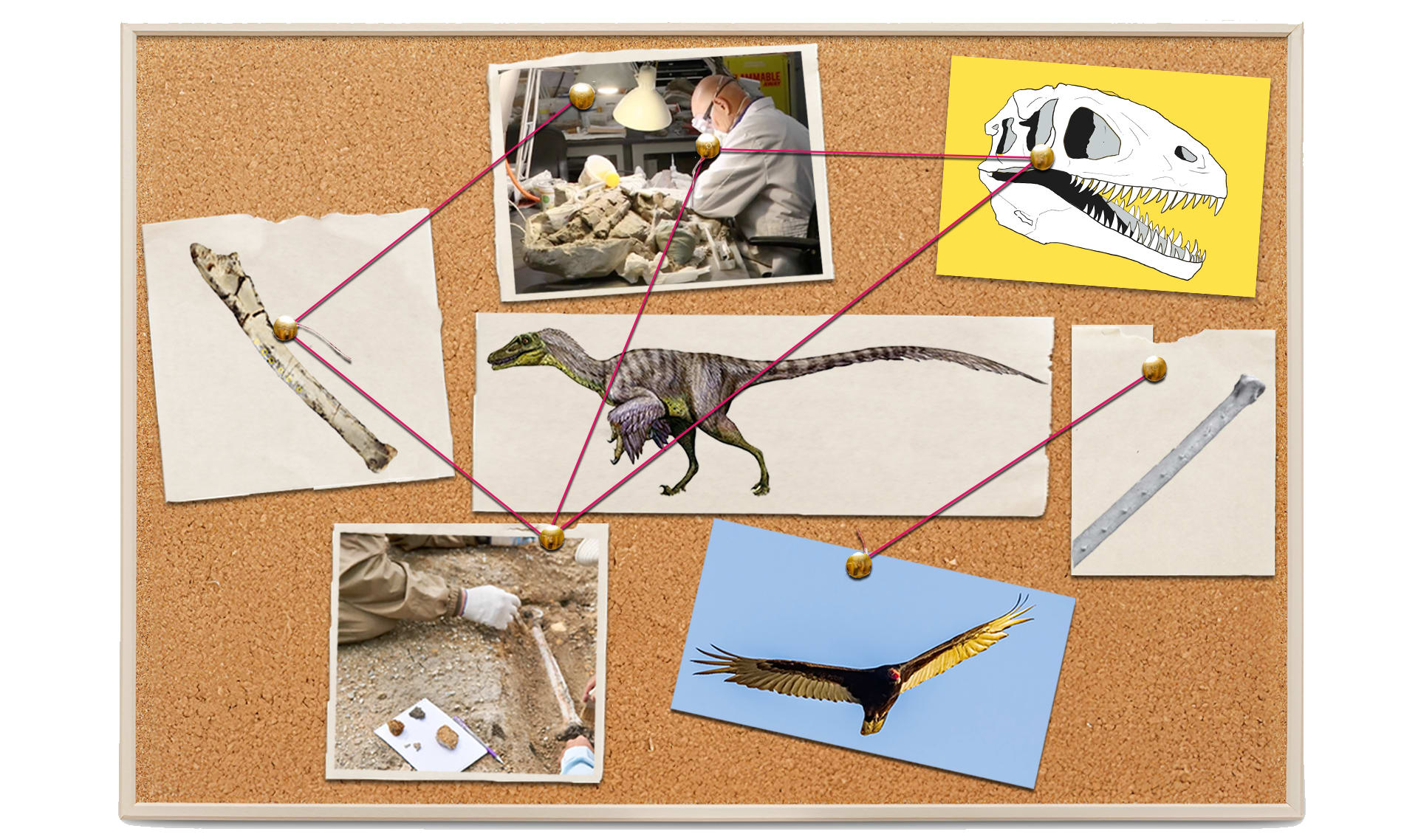
evidencia
11 de 11
información que puede ser usada para respaldar o rechazar una idea
